Phnom Kulen
Join me on a captivating journey to Kulen Mountain in Siem Reap, Cambodia. Explore sacred lingas, and connect with a lying Buddha, our day trip was filled with cultural marvels and inspiring landscapes, creating unforgettable memories.

If the path is beautiful, let us not ask where it leads. – Anatole France
Phnom Kulen, or Kulen Mountain, is the largest forested area in Siem Reap Province. The National Park functions as Siem Reap's primary water source. It has a rich archaeological heritage and is home to an amazing variety of wildlife. There are waterfalls, lingas, and reclining Buddha. If you are lucky, you can even spot endangered Indochinese Silvered Langur.
The beginning of our journey
We booked a day trip to visit Kulen Mountain, with a tour guide. To see the mystical and sacred mountain with our own eyes. On this trip, 'we' are Kiki, Joshua, and myself. The minibus would pick us up at 8 in the morning. Cambodia being Cambodia, they were an hour late, but we saw the puppies play, had some time to chill out a bit and I read a chapter in my book.
When the bus picked us up, we got some information about Cambodia, its political system, its inhabitants, and its culture. It was nice to see the landscape change during the one-hour drive from Siem Reap to Kulen Mountain.
From city to countryside to the mountain
Siem Reap is a big city with concrete roads, stone buildings, and a lot of tourists and people walking around. The countryside with gravel, or dirt roads, is clearly less populated with little shops that sell fruits and other food wares. Usually just on wooden surfaces or stalls. Some houses are made of stone, the majority are wooden houses, very typical stilt houses, and farms.
It felt great to be outside of the city again, seeing more nature, rice fields that are magically still green, in the otherwise barren fields. In other places, there was a lot of greenery and trees, with cows grazing alongside the road.
At the foot of the mountain, we pulled over and got a chance to go to the bathroom. There were little shops with local snacks. It had been ages since Kiki and I ate a local Cambodian snack and we opted for the fried bananas inside a fried rice roll. Delicious!
The way up the mountain was... Challenging. The dirt road was very narrow with here and there a piece of gravel or concrete. Rangers were standing every five meters along the road. There were a lot of tourist buses, and locals visiting the sacred place. On the way up we saw a family with a car that got overheated. On the way back, the family was still stranded there...
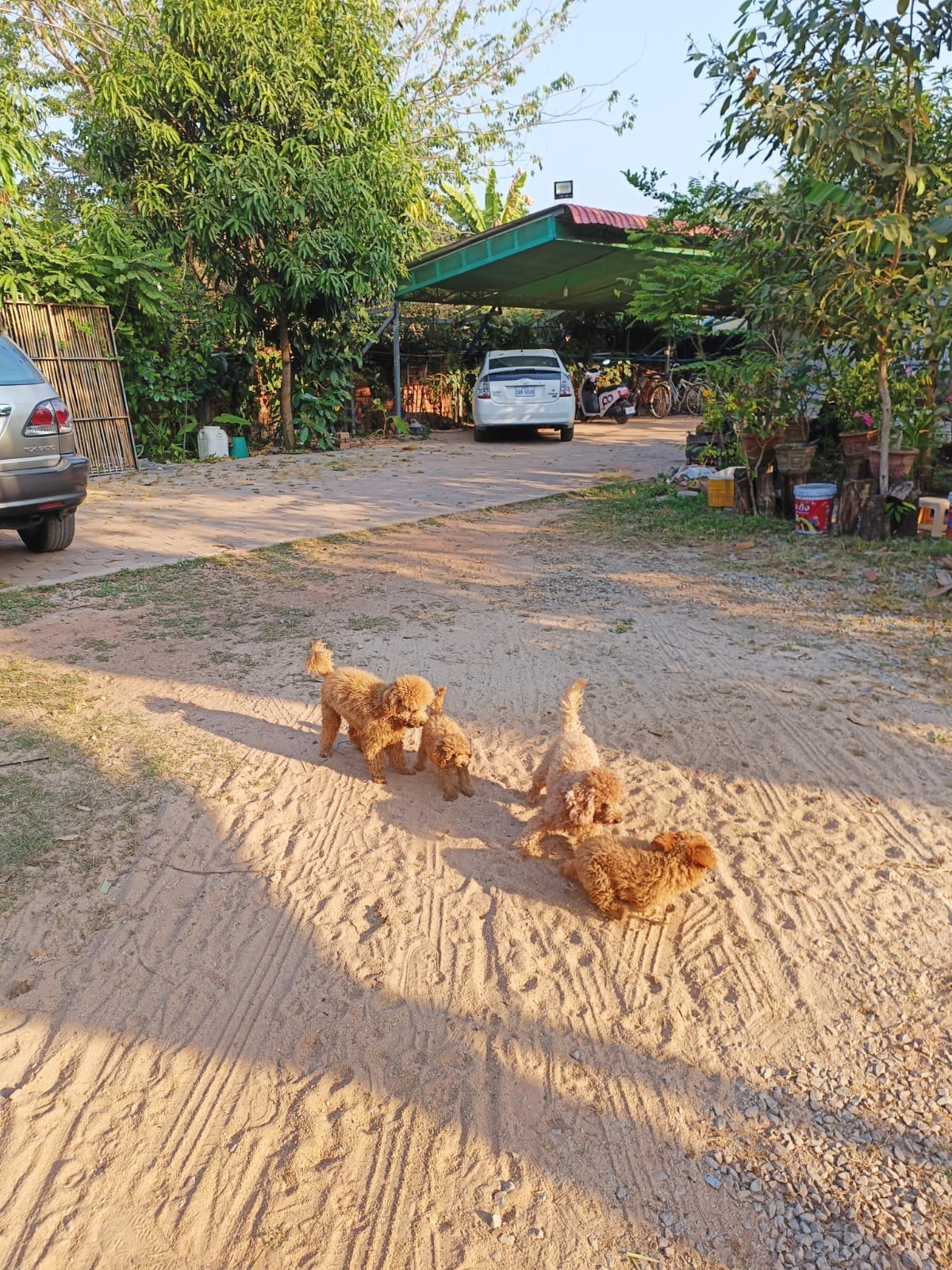
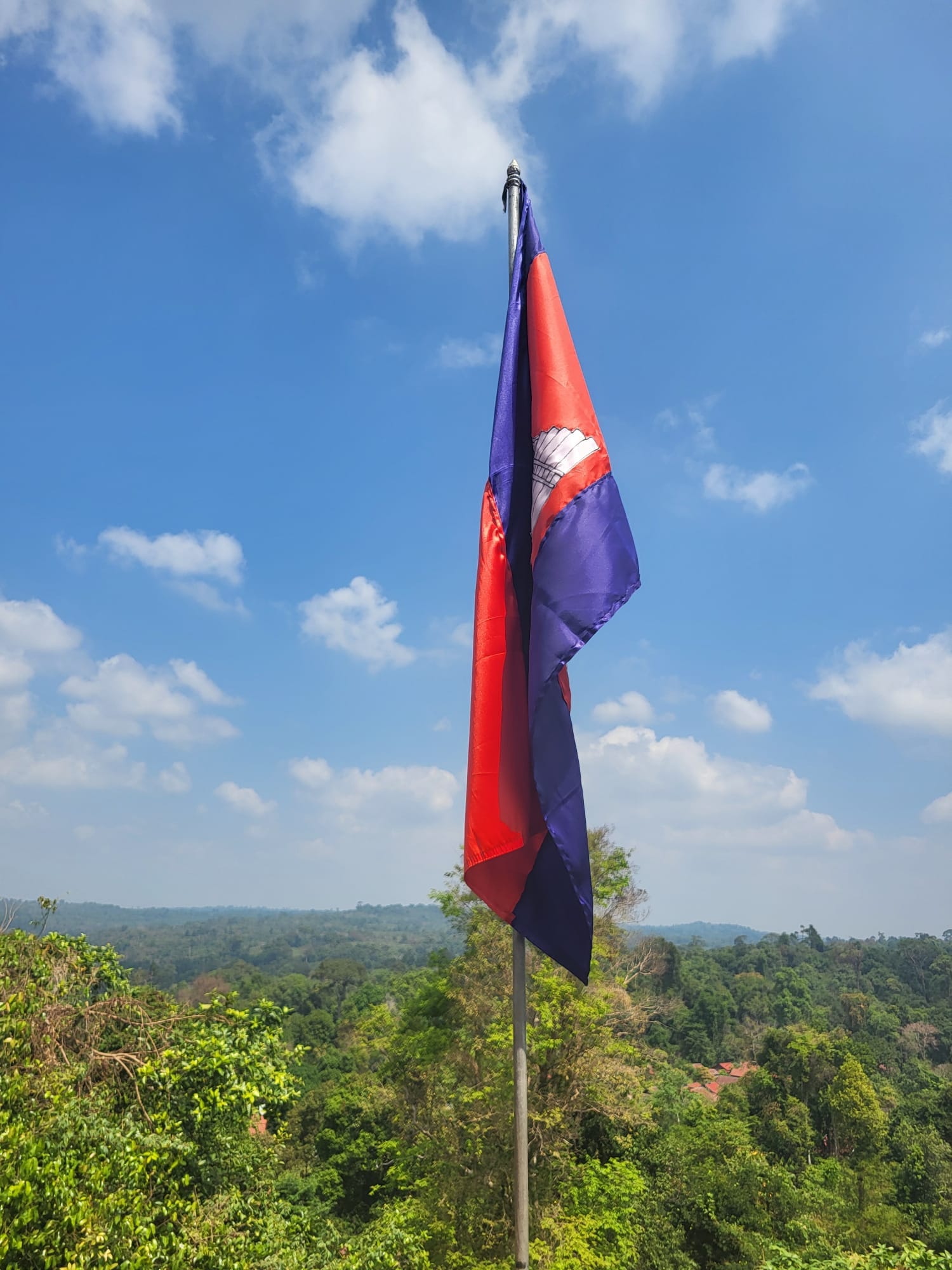
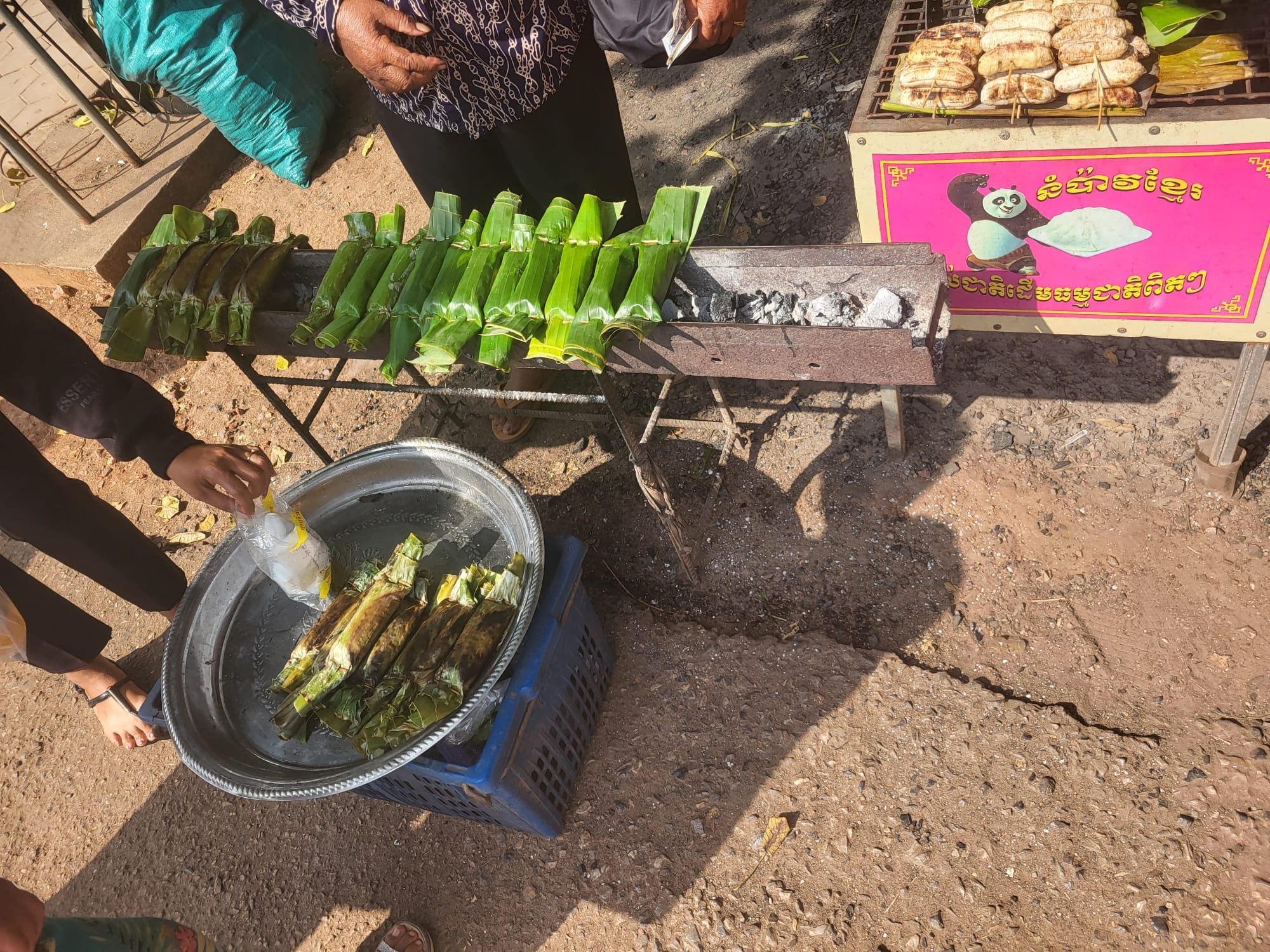

The holy mountain
Phnom Kulen is known for its huge waterfall (a drop of 29m) and sacred places. Both the waterfall and Preah Ang Thom-pagoda, which houses a gigantic Buddha statue, attract hundreds of visitors a day. During annual holidays even thousands of visitors. Phnom Kulen would be the birthplace of the old Khmer Empire, it was here that King Jayavarman II in 802 CE declared the independence of Java. During the Angkorian age was the area known as Mahendraparvat or 'Mountain of the Big Indra'. Indra is a Buddhist God. Angkor Wat is made out of the sacred stones of Kulen Mountain.
1000 linga's
Our first stop was 'the 1000 linga's'. We got out of the bus and walked down to the river. In the river bedding, there were a lot of squares carved out with a pole - or pillar 'erect' in the middle of each square. The poles would've been longer, but because of erosion, they have gotten smaller over the years. They represent the god of creation, Shiva. The squares represent a female god Uma. Water that flows over a linga will bring happiness, health, and prosperity to everyone who drinks or bathes in it. The water from Kulen Mountain is said to have these powers, thanks to the 1000 linga's carved into the river bedding.
The source
A bit further we witnessed the river source. The water wasn't too clear and legends says that it changes into seven colors. The Khmer people also believe that the source has magical properties. It would heal everyone and cleanse the body if you drink the water. If you wash your head with it, you would be freed from worries and troubles. This we had to try out of course! After drinking the water, and splashing my face and head with it, I must admit I felt like I was walking on clouds.
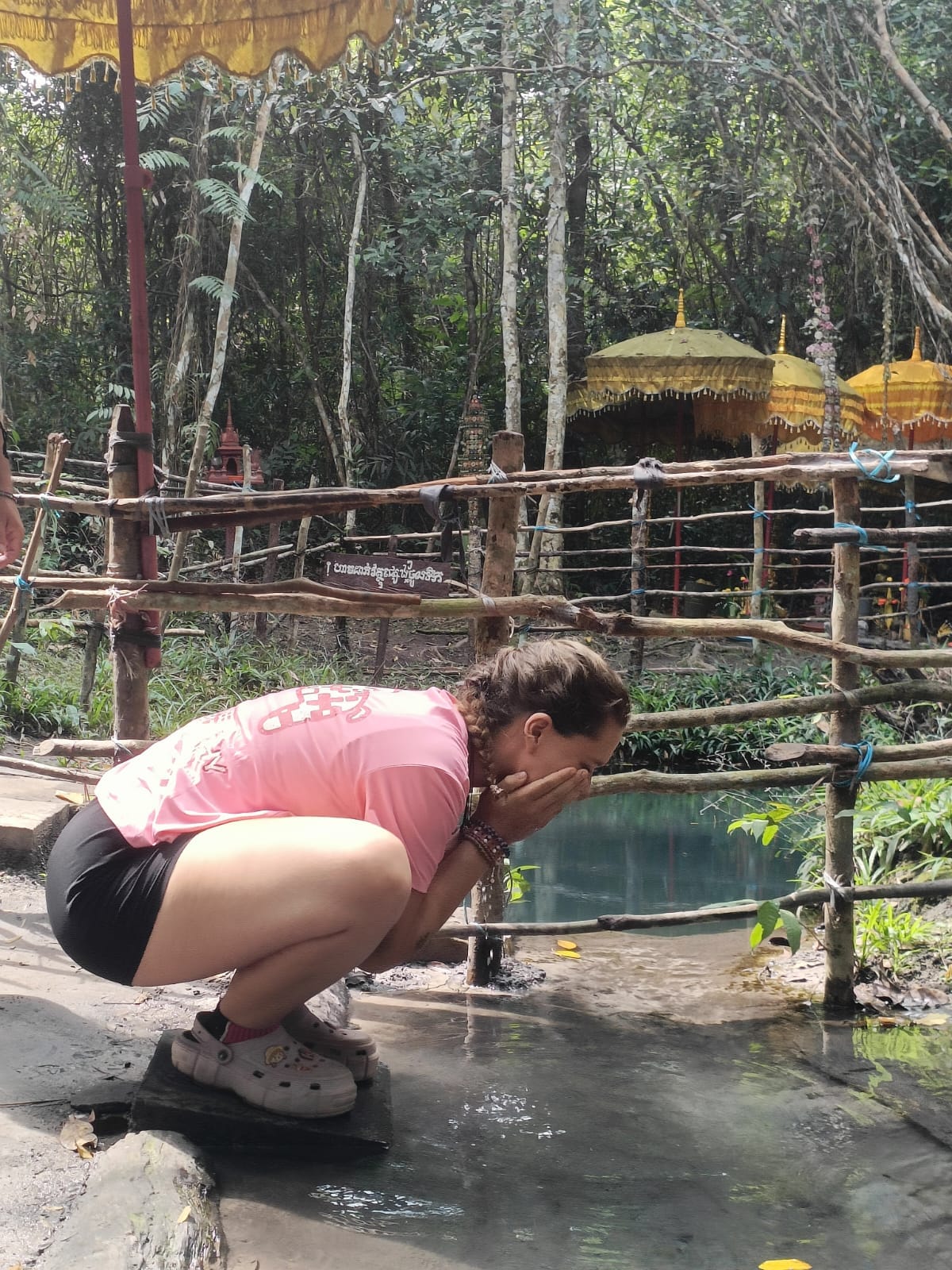
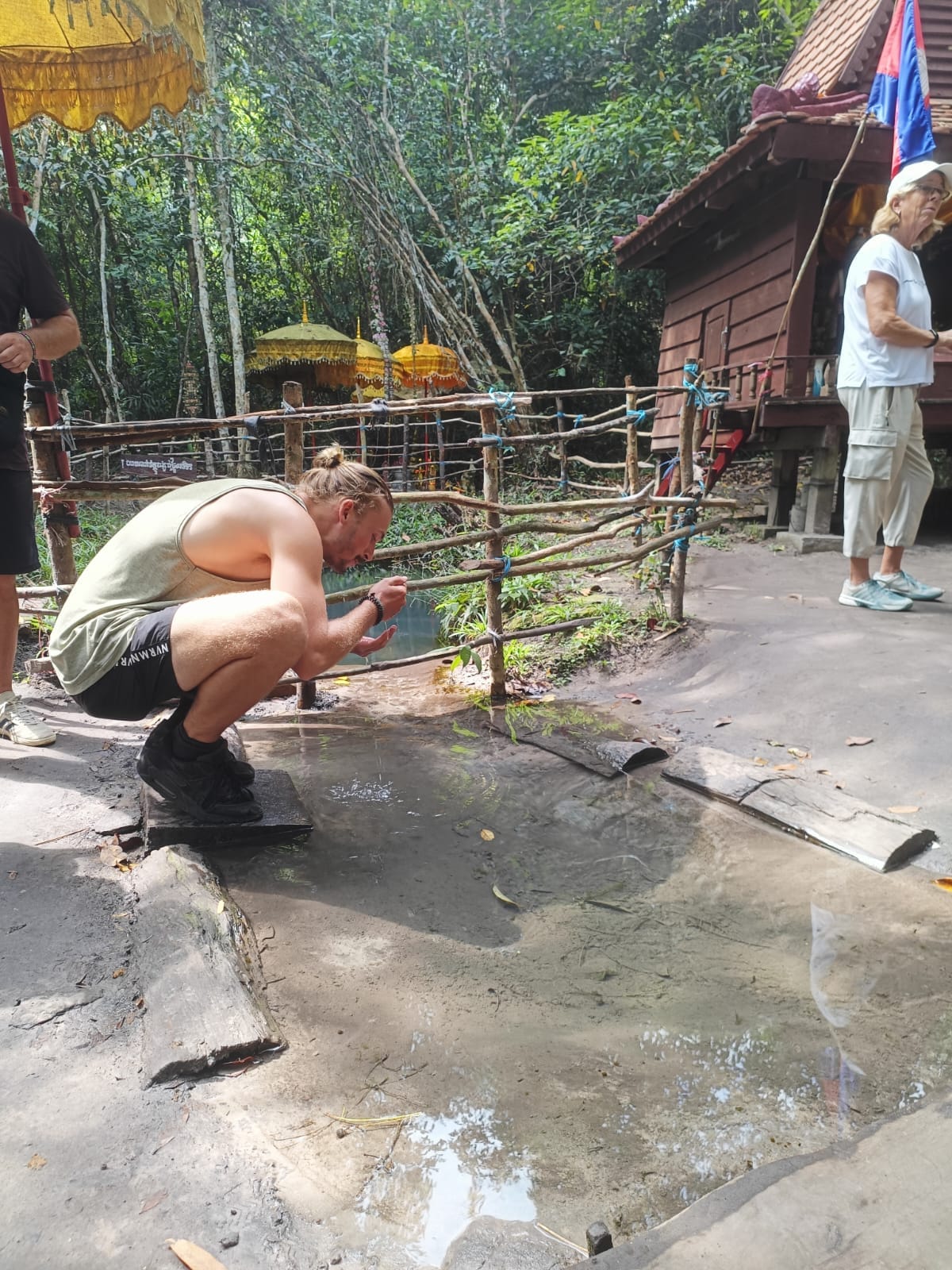

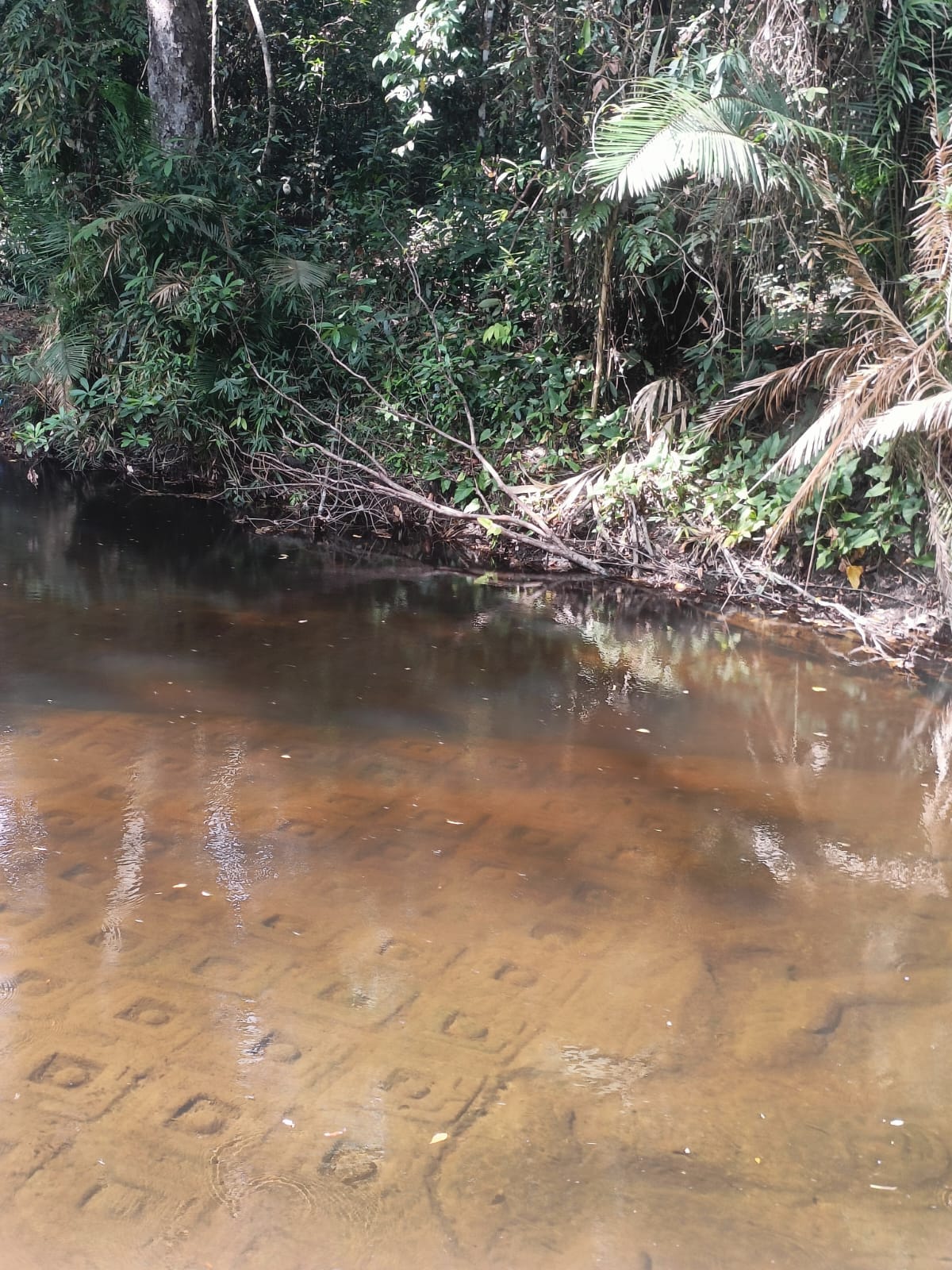
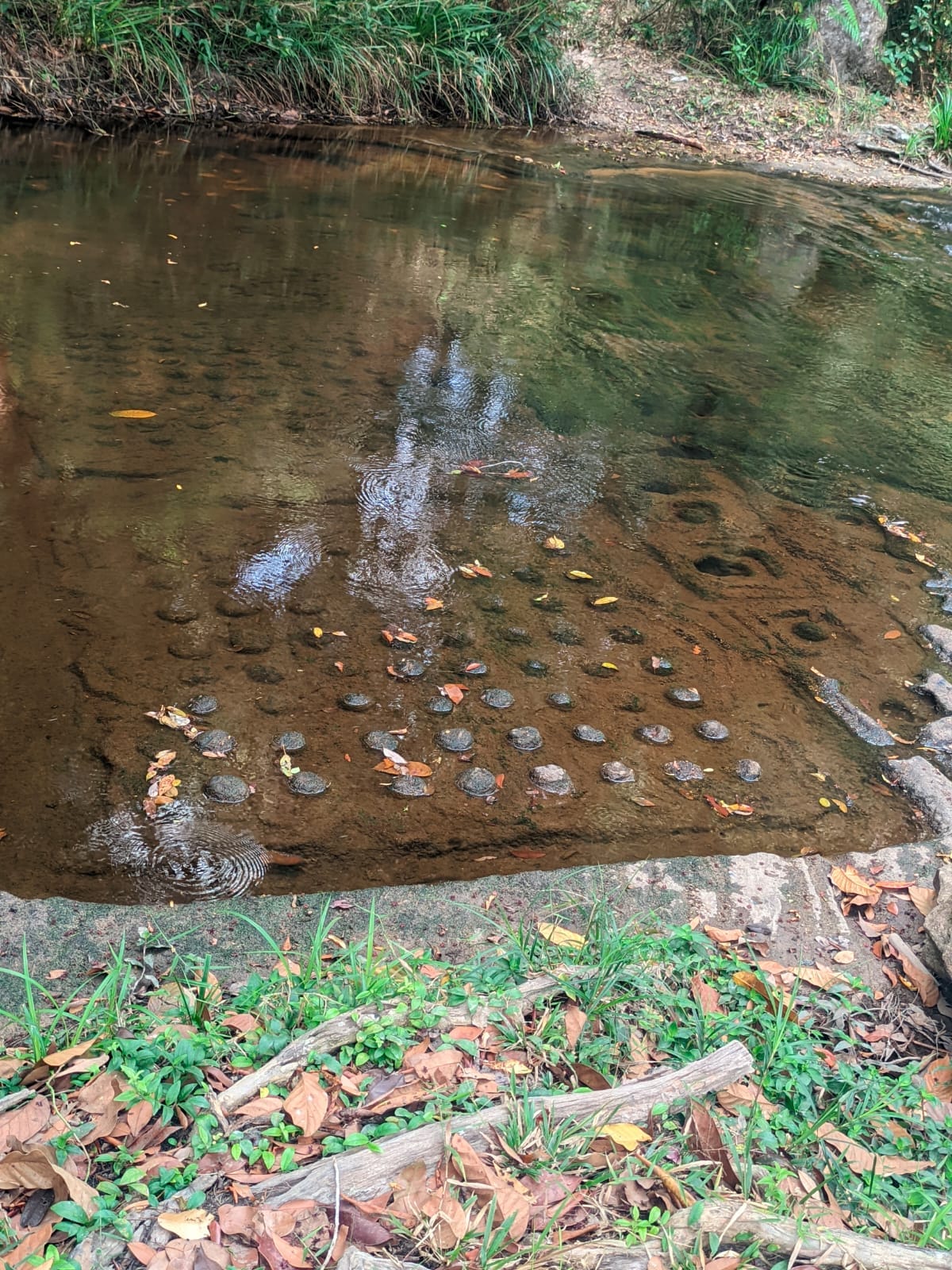
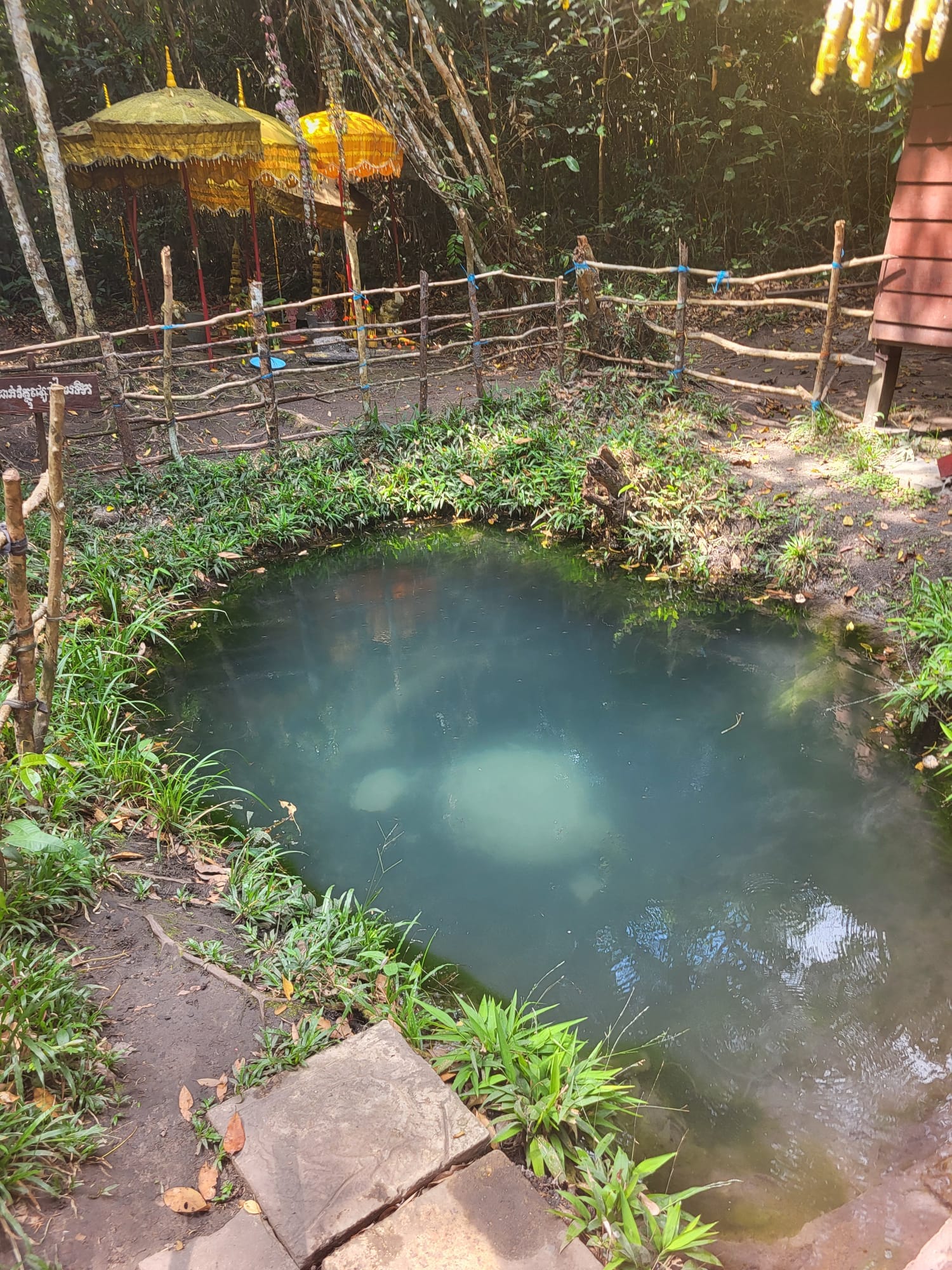
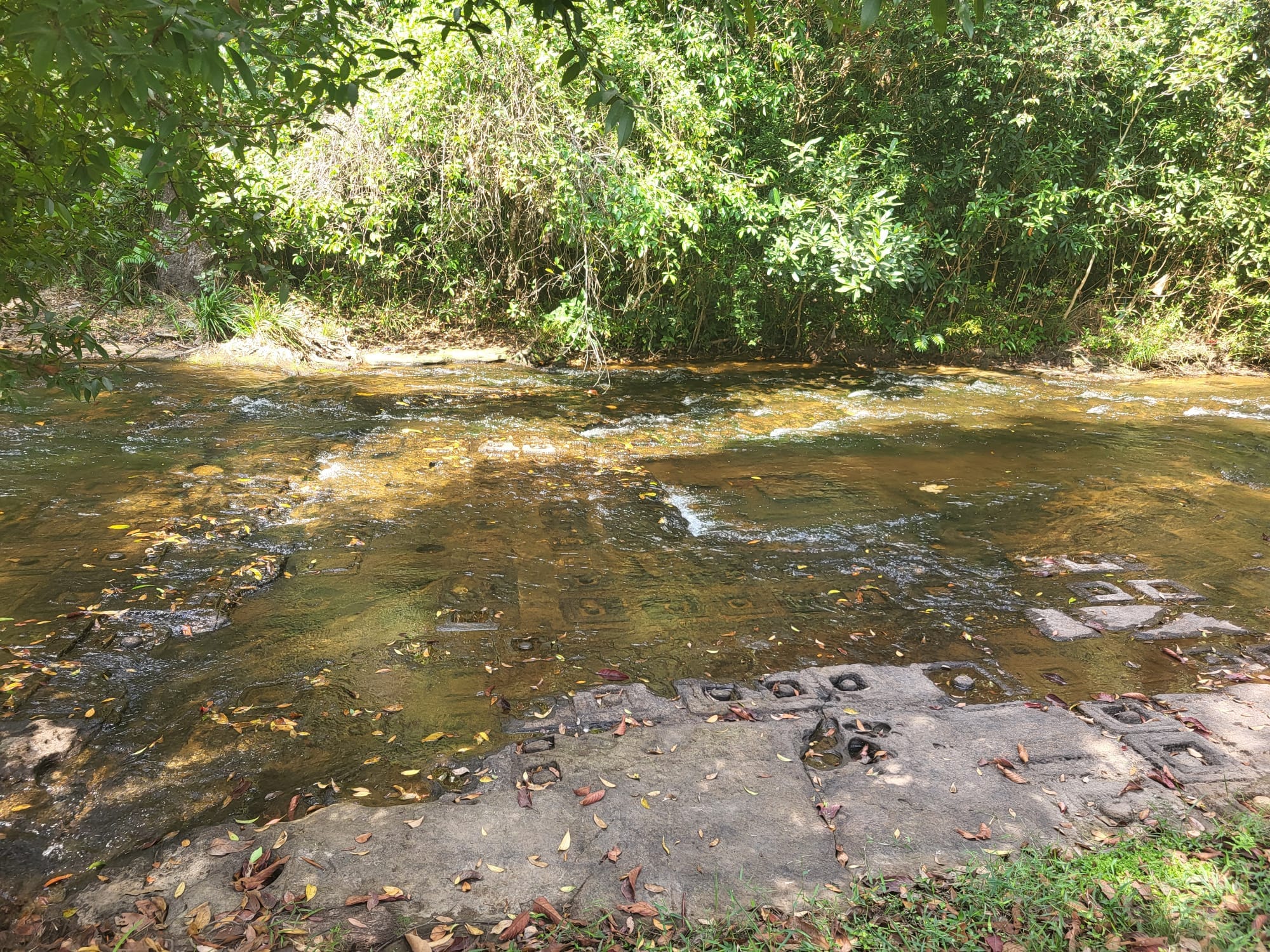
Ancient traditions
After drinking the water, we hopped back onto the bus to visit the pagoda with the lying Buddha. We saw people selling tons of Cambodian snacks, trinkets, and curiosities on the way up the hill. The pagoda is built on top of the mountain. We had to walk barefooted in the temples, as is customed here. First, we saw the footprint of Buddha, where we could wish for something. The only rule is that you can't tell anyone what you wish for (sorry guys).
After the wish, we saw a lot of places to pray, and a lot of people praying. With a flight of stairs, we arrived at the lying Buddha. This sacred place came with tons of traditions and customs. First of all, you can't wear shoes or something on your head, to show respect. If you enter, you first make a wish, then you touch the feet of the Buddha. then you walk up to his head. You touch his head first, then your head. This practice is believed to clear you from troubles and worries. Secondly, you touch the eyes of the statue, followed by touching your own eyes. This would give you insight. Then you touch the cheek of the Buddha and then your cheek. This practice would provide you with clean skin and a beautiful face. Lastly, you touch his lips and your own. I just copied the guide here. He didn't give much explanation about this last practice. To exit the Buddha Pagoda, you have to let the spirits and the Buddha know that you'll leave, by slamming with a ritual hammer on a gong.
Once outside the Buddha Pagoda, we went to another linga, where we drank some more holy water, and washed our heads for a second time. On the way down, we bought another traditional snack. Sugar inside a ball of something squishy. A delicious and very sweet snack.




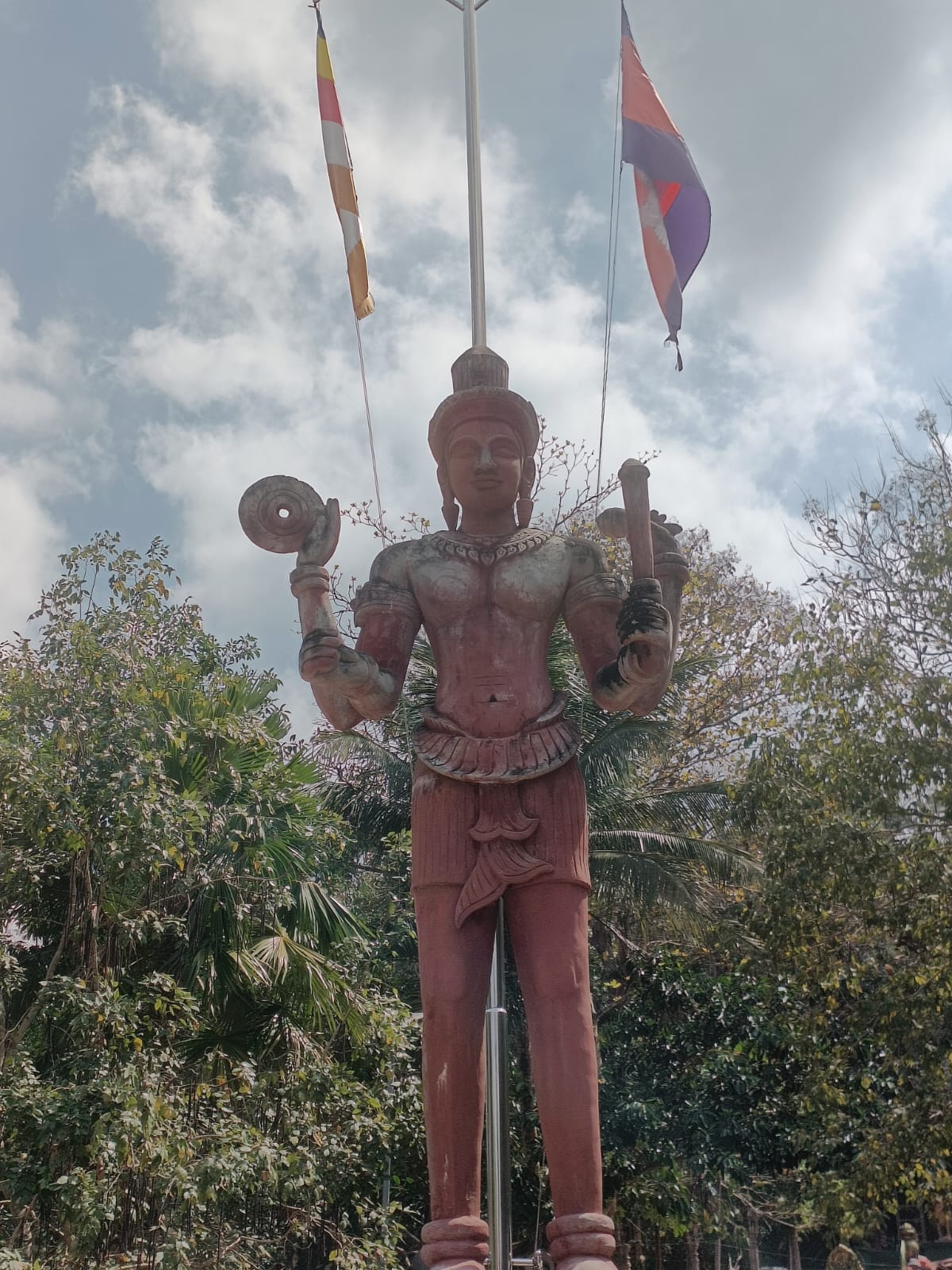
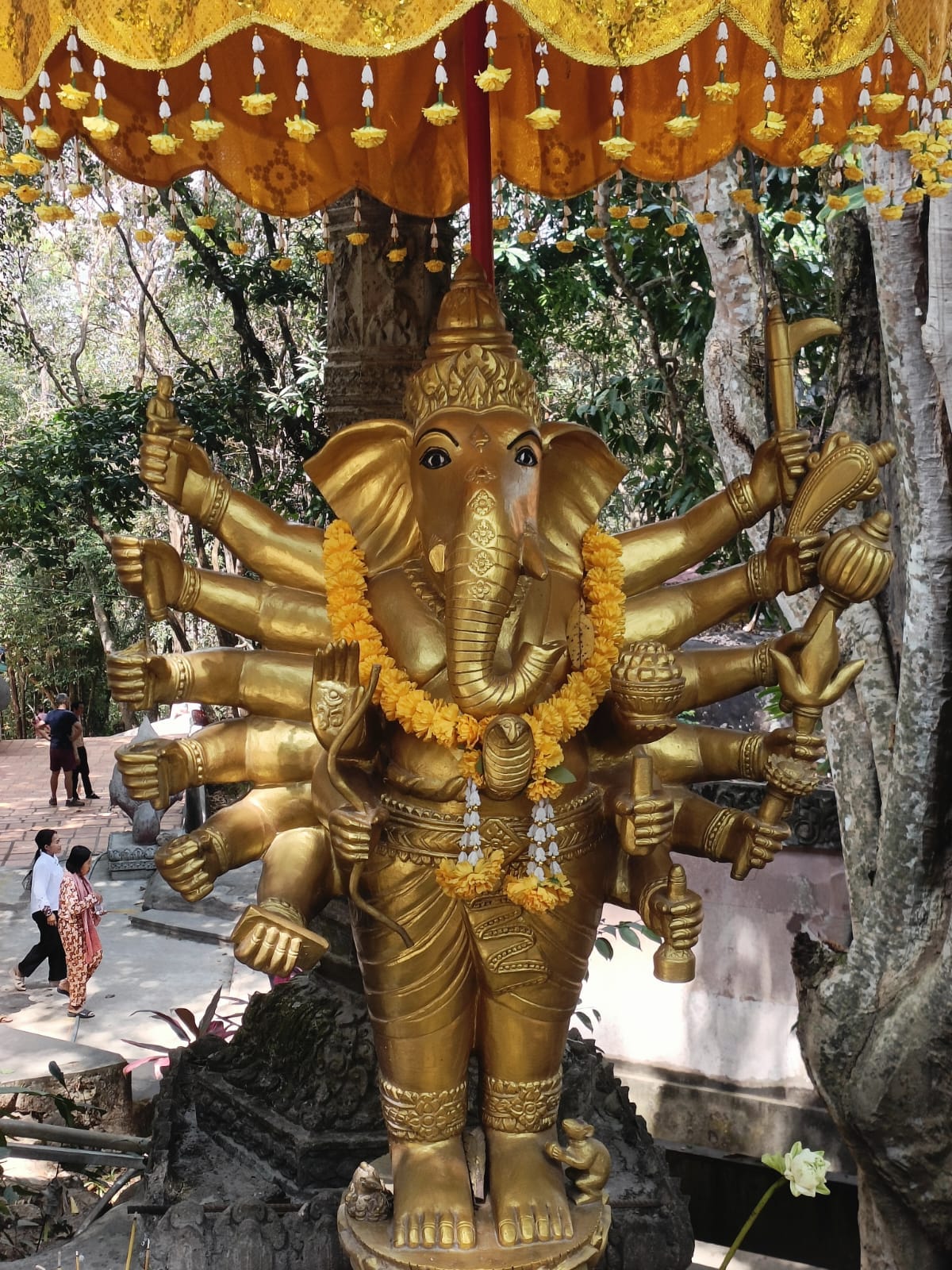
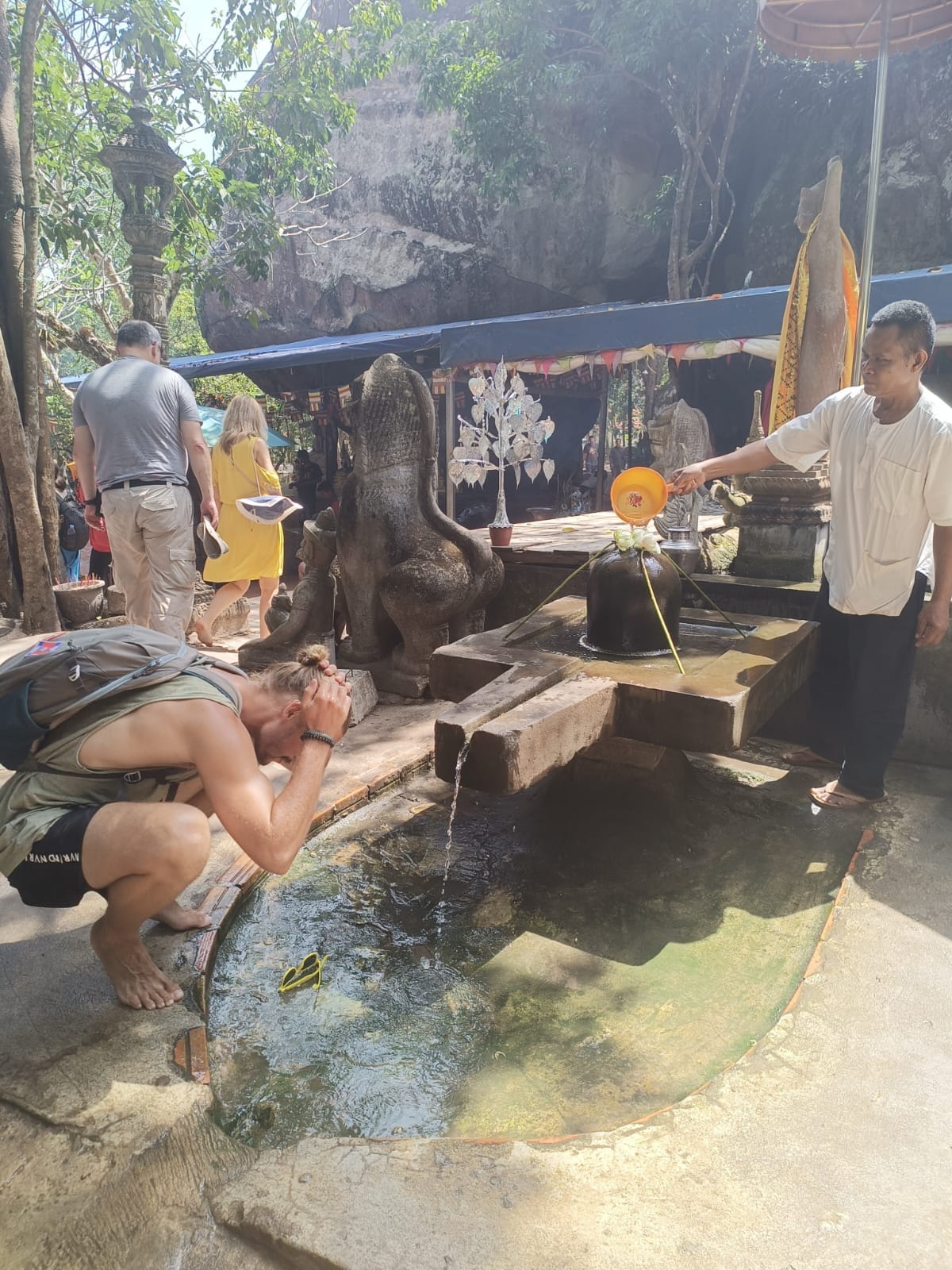
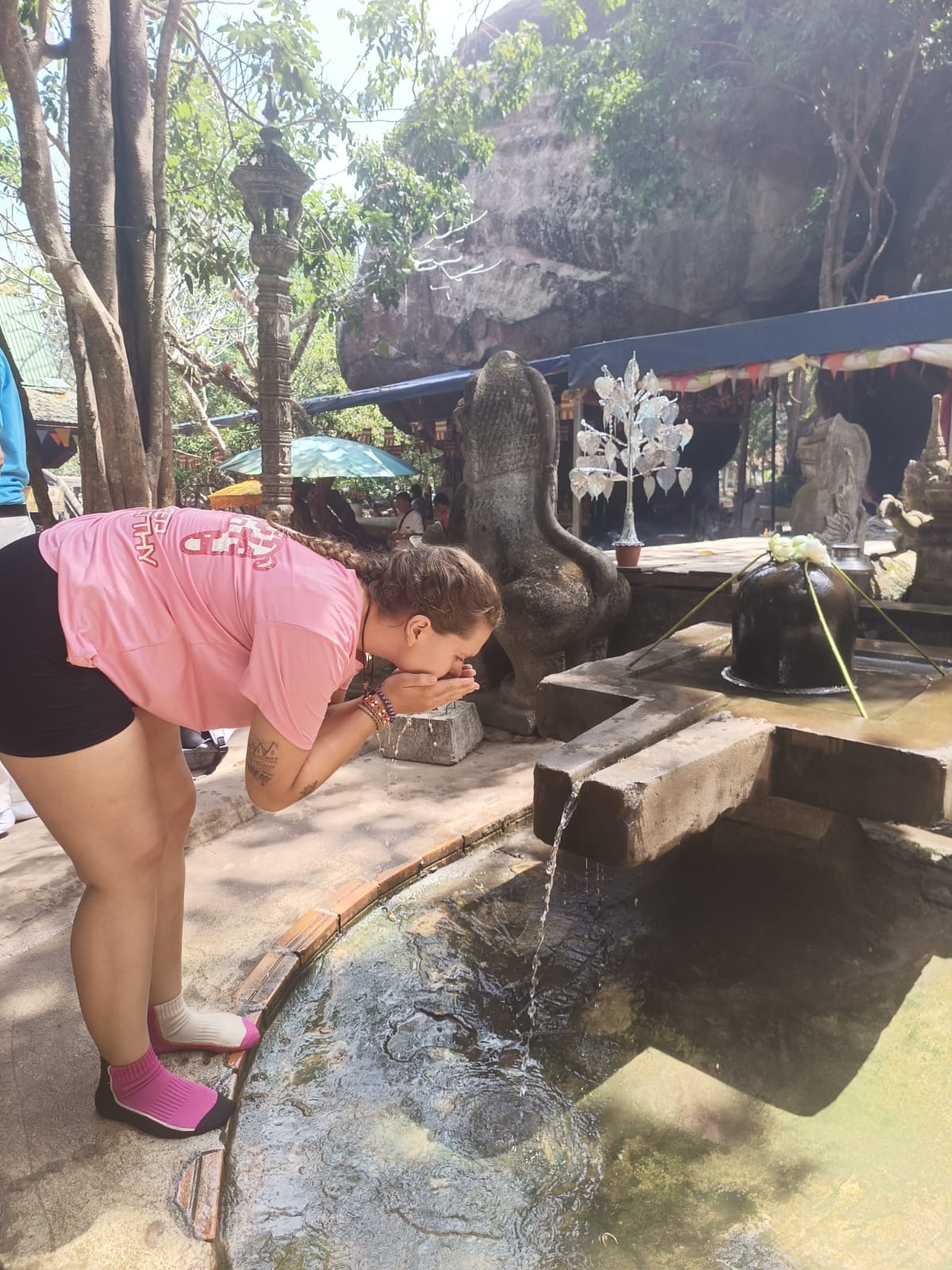

The waterfalls
The kings of the Khmer Empire washed them in the source which they call the first waterfall because this water is the cleanest and the purest of all. They would do this before going to Angkor Wat. The second waterfall was for the soldiers before going to war. The third and last waterfall was used by the 'ordinary' people before they would go and pray in the Angkor temples.
The first waterfall was beautiful, but not soothed to swim. A lot of people with small children hung around here. The kids playing and running around, the parents sitting and watching them from the riverside. We swam in the waterfall below, where it was deep enough where you can actually swim. It is absolutely stunning how beautiful it is! The water falls for 29 meters, creating hundreds of rainbows. Plants, fauna, and flora thrived around the water, the fish nibbling on my feet. Kik referred to it as the land of the fairies. It created some beautiful pictures and great memories.
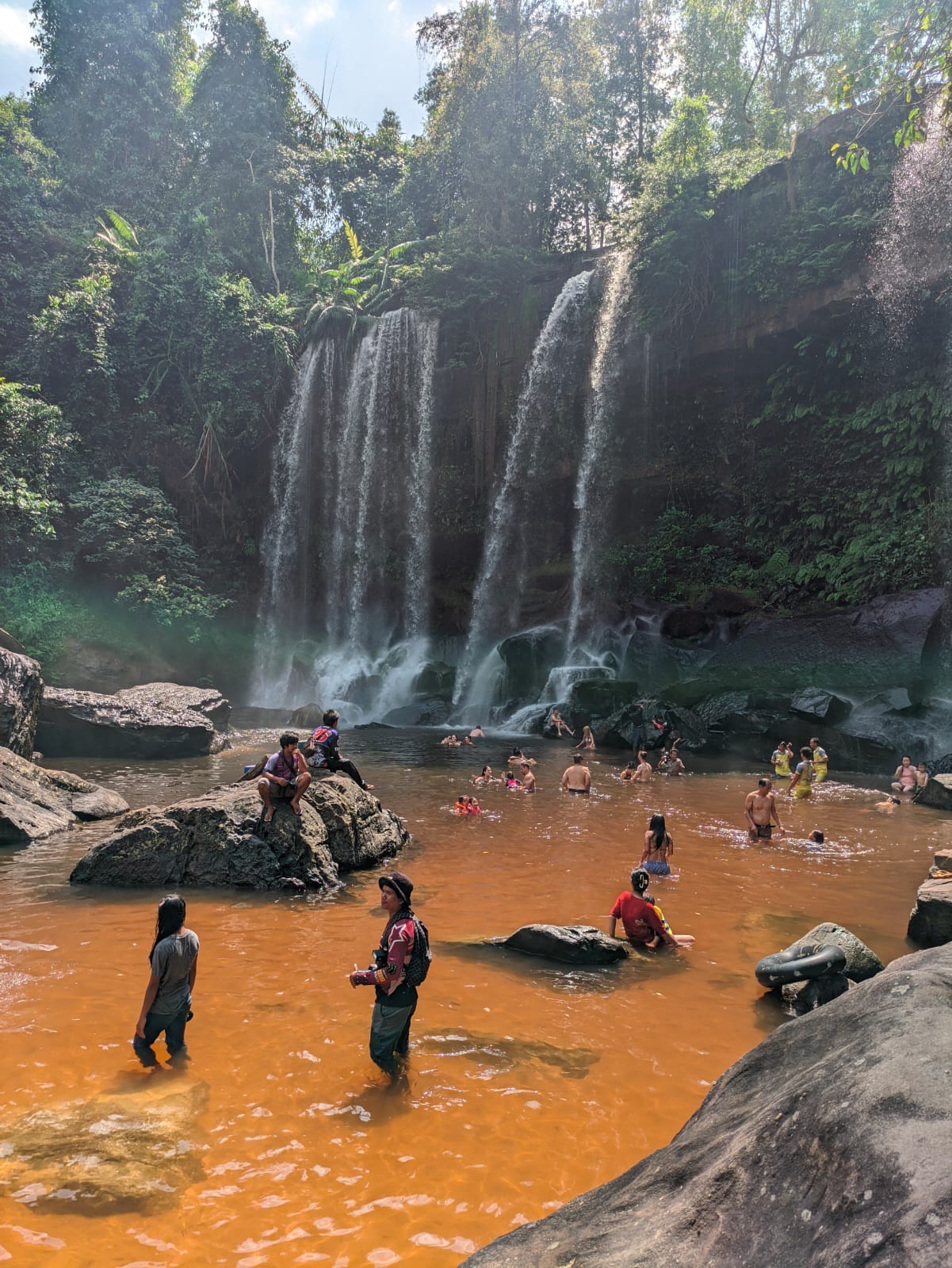
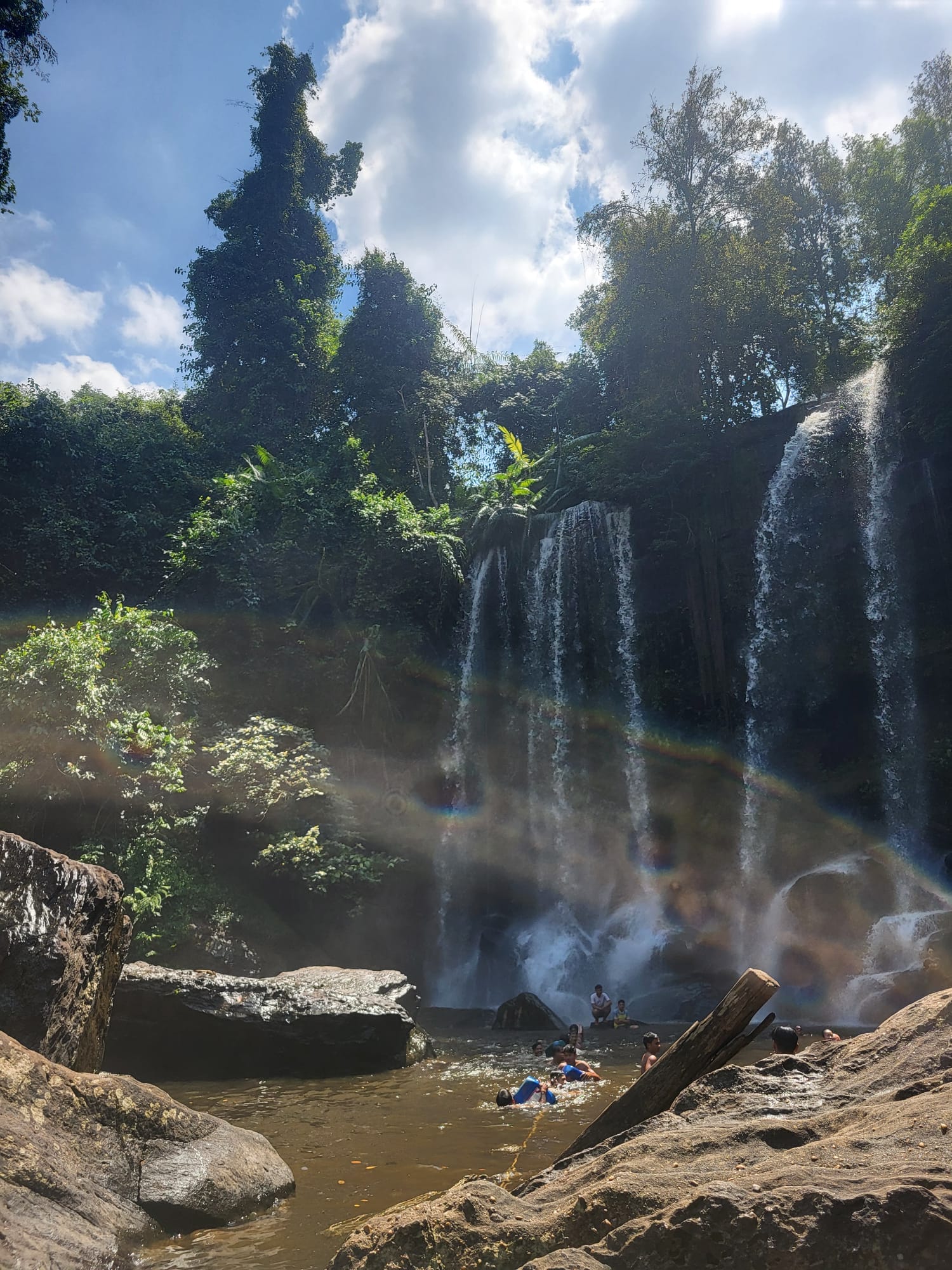



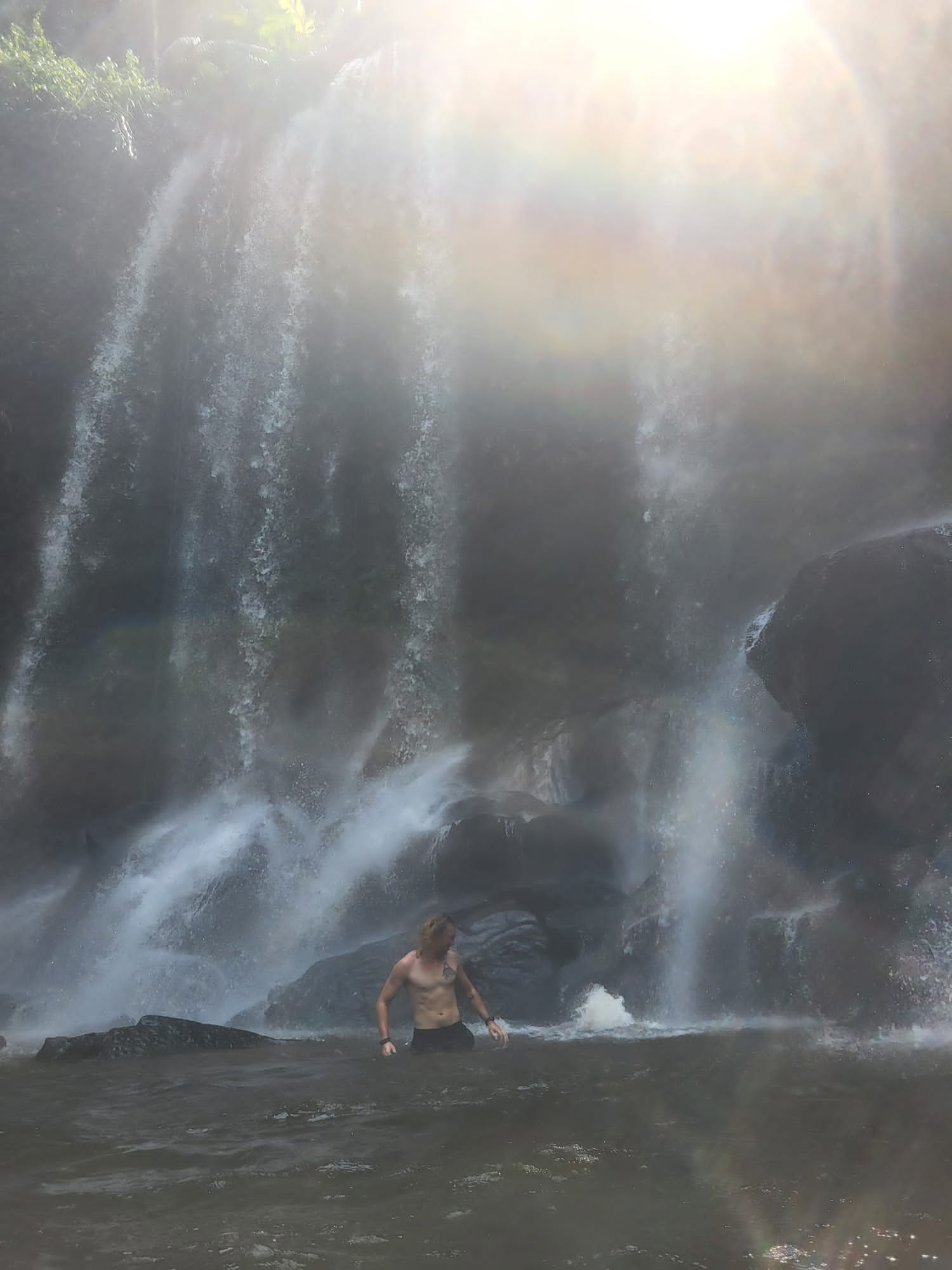
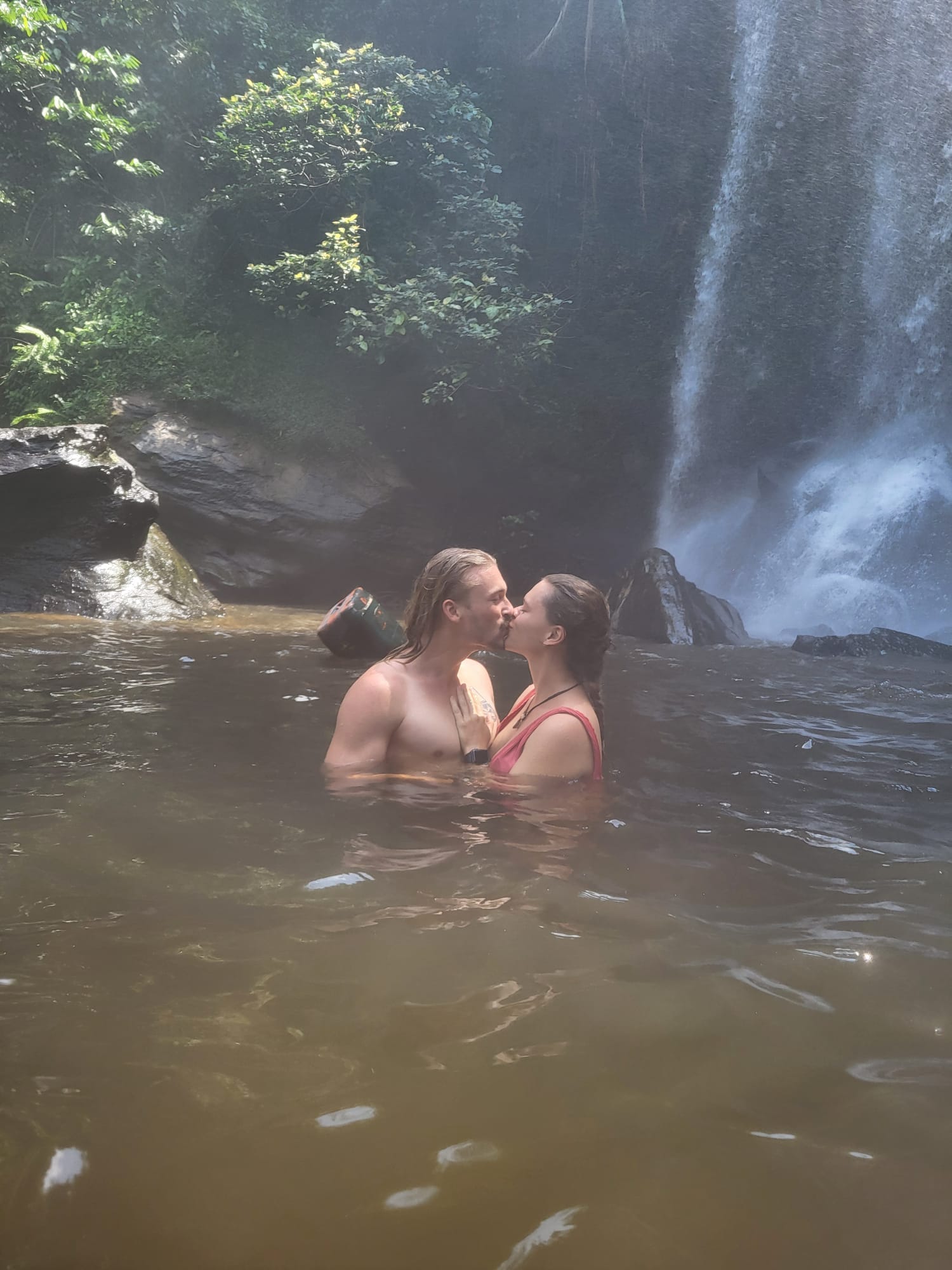
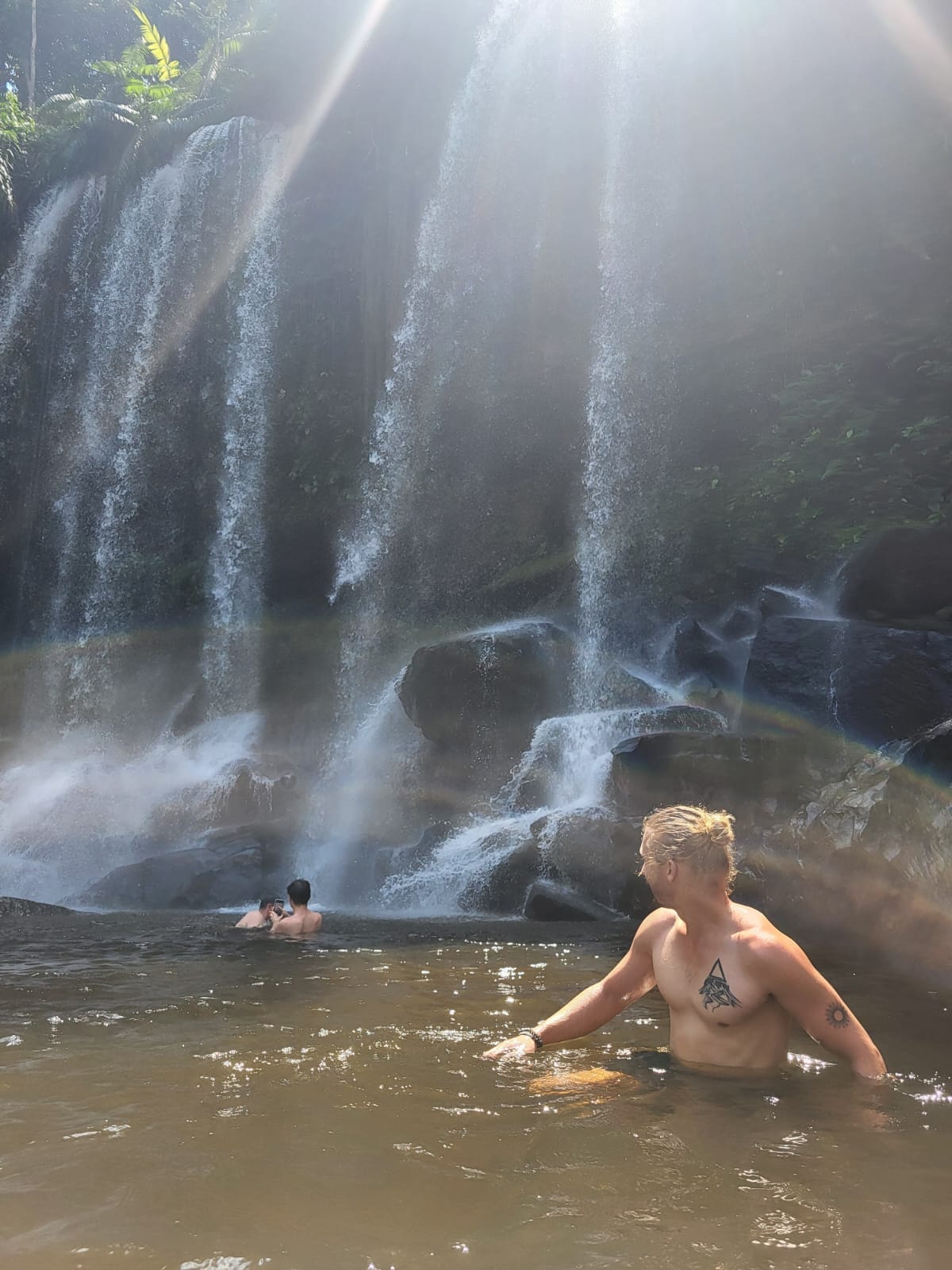
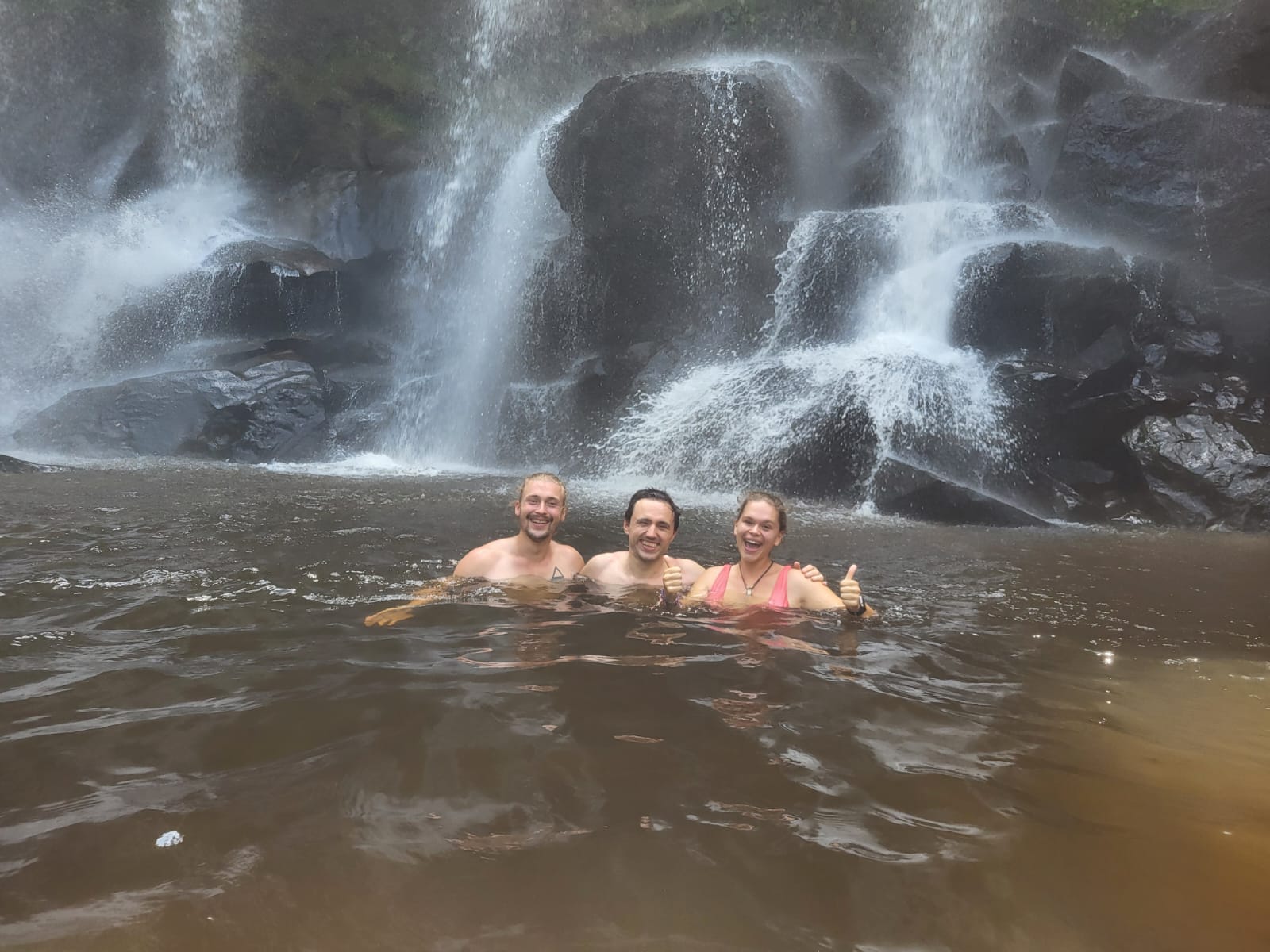
After what felt like 5 minutes, we went back to the bus to set our eyes on a viewpoint. In one word: stunning. It had Preikestolen vibes (a cliff in Norway with an amazing view over the fjord and mountains). It was a cliff with amazing views over the forest and the surrounding mountains.
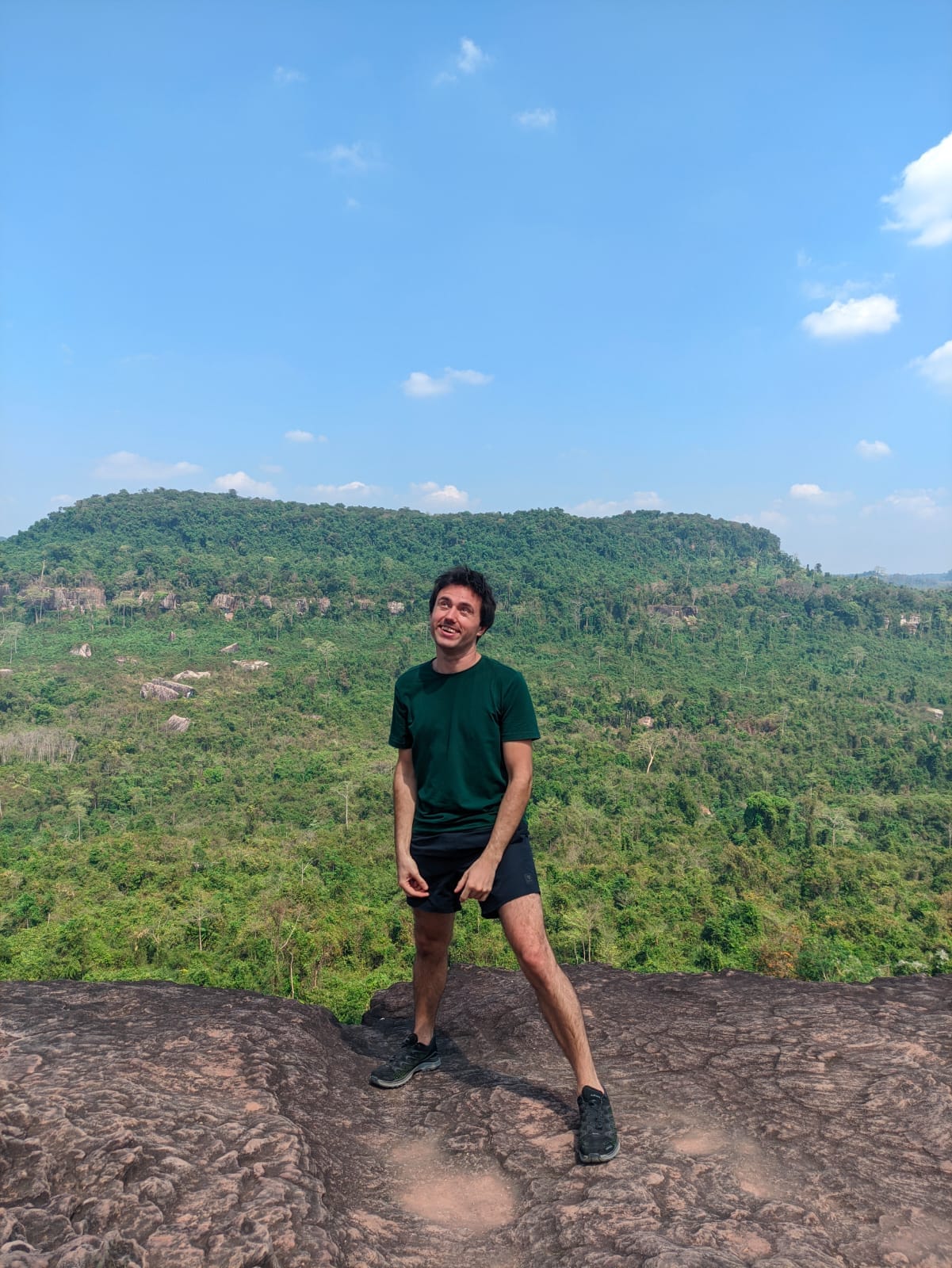

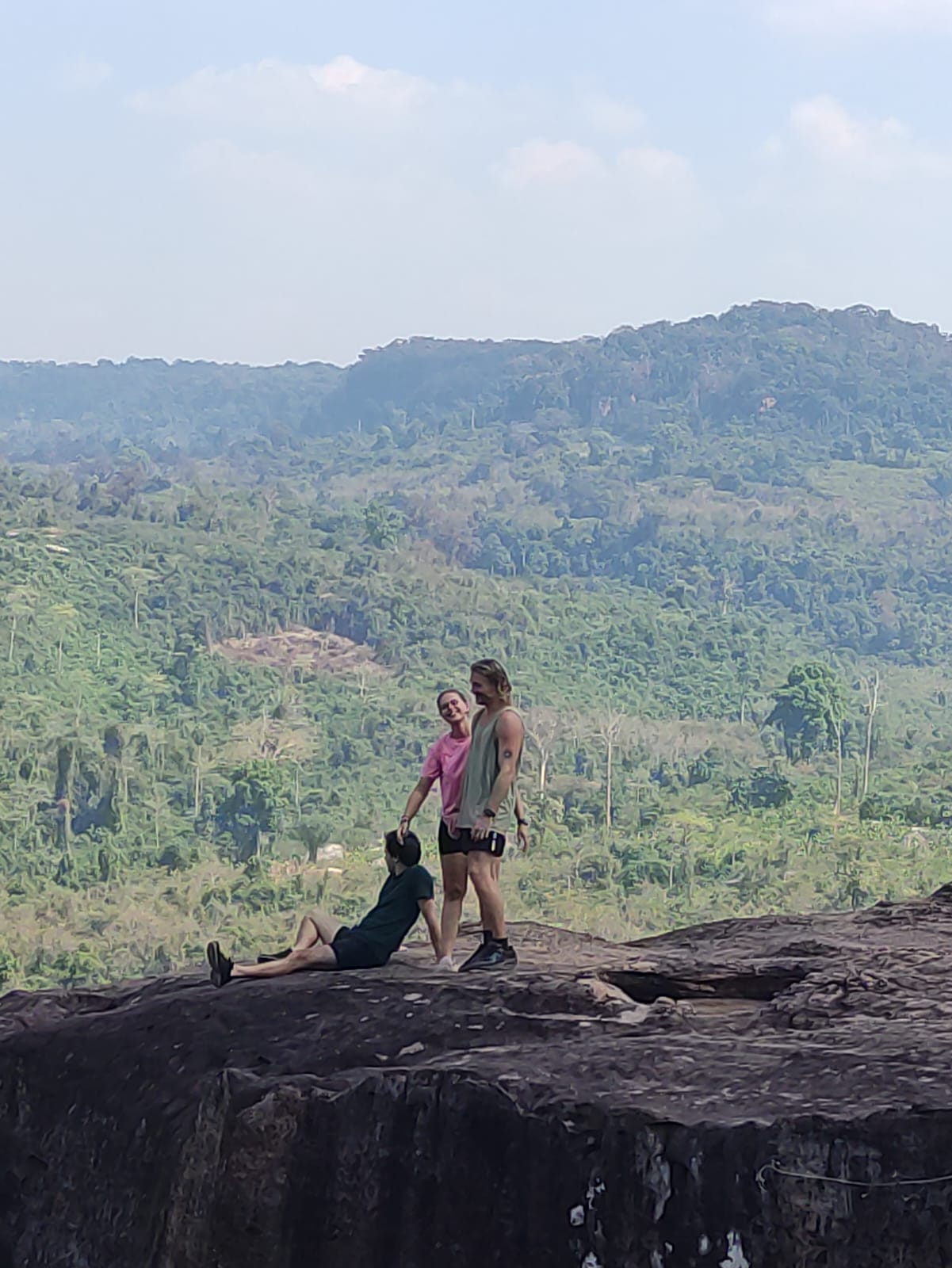
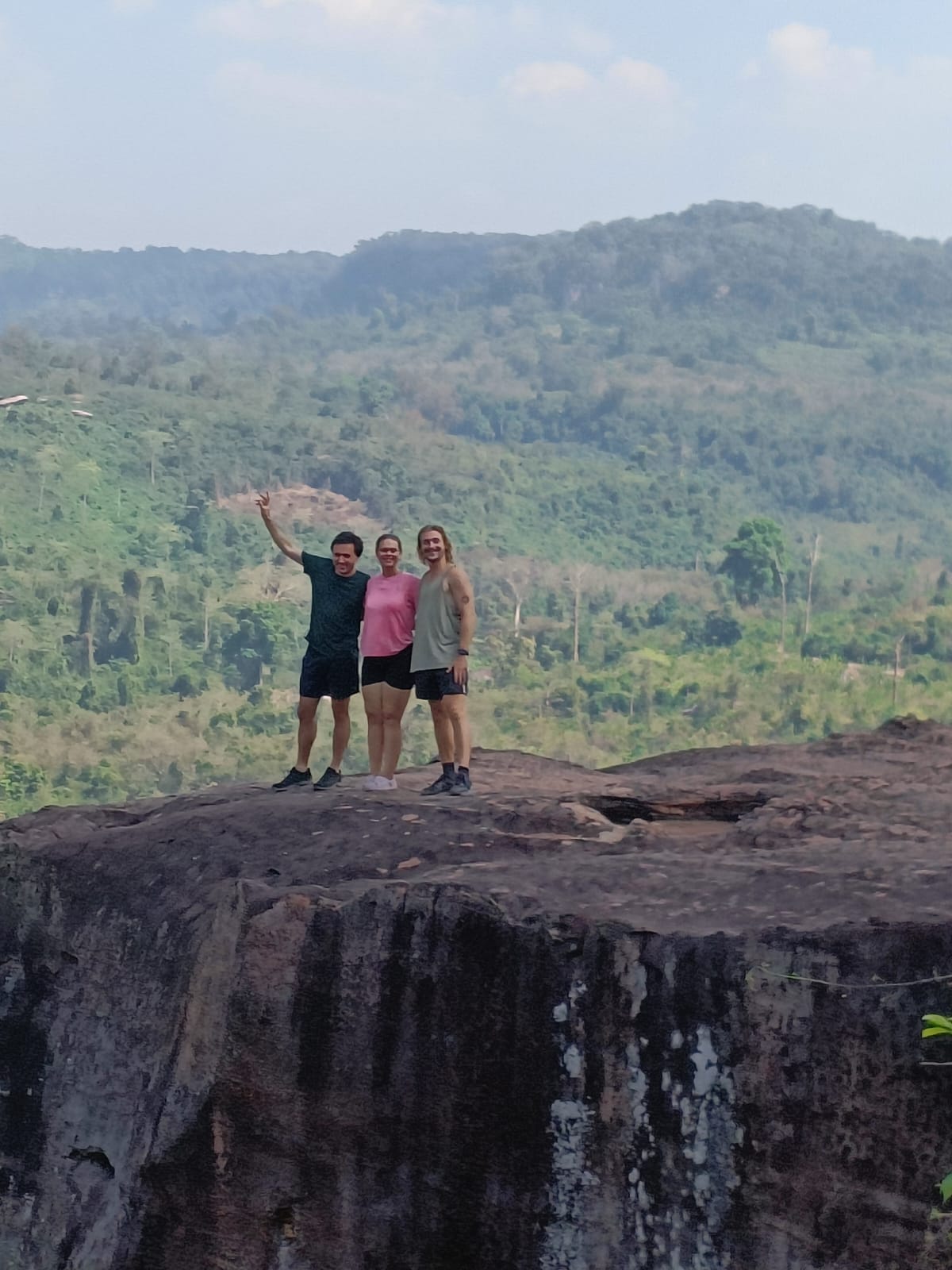
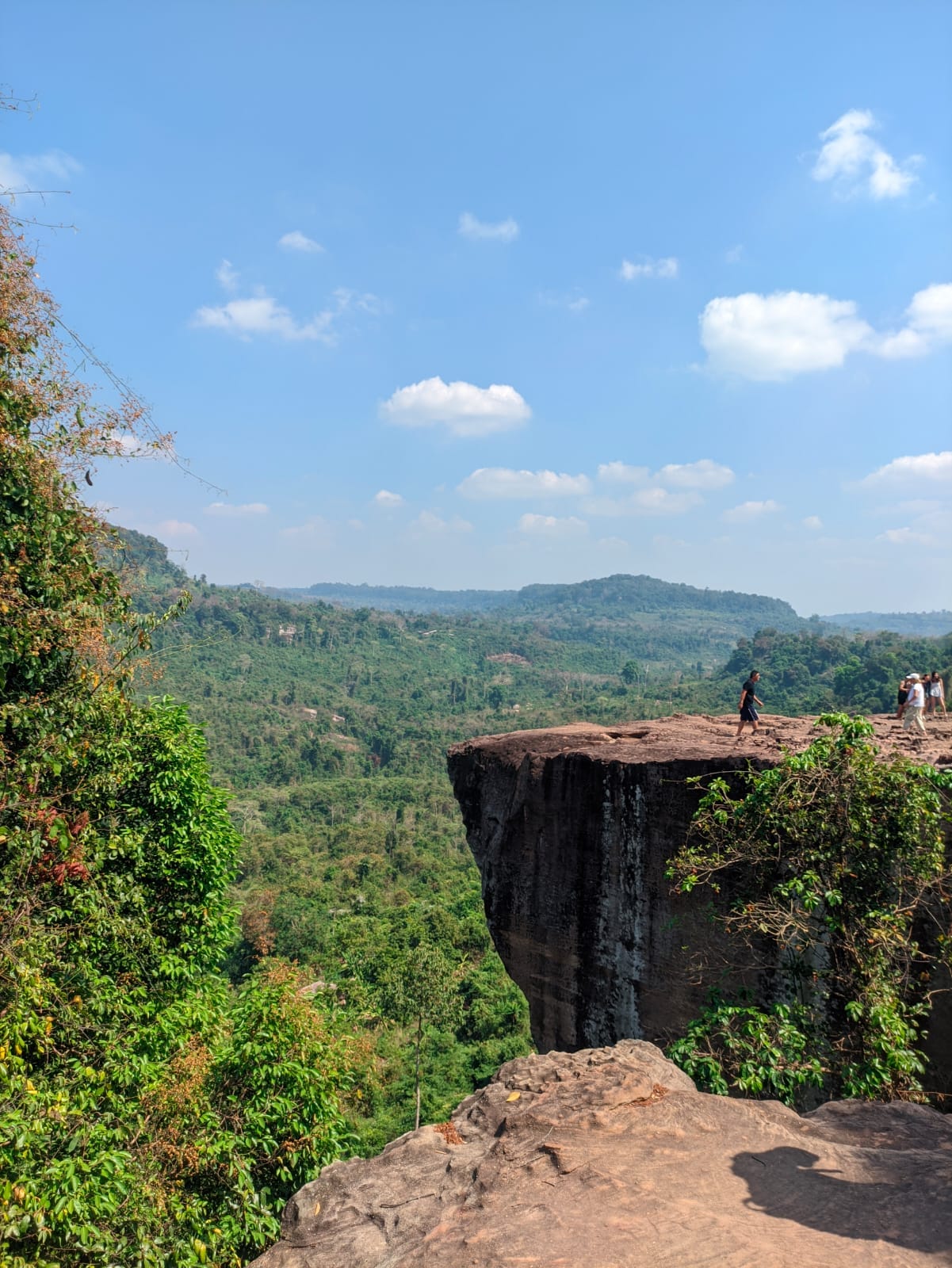
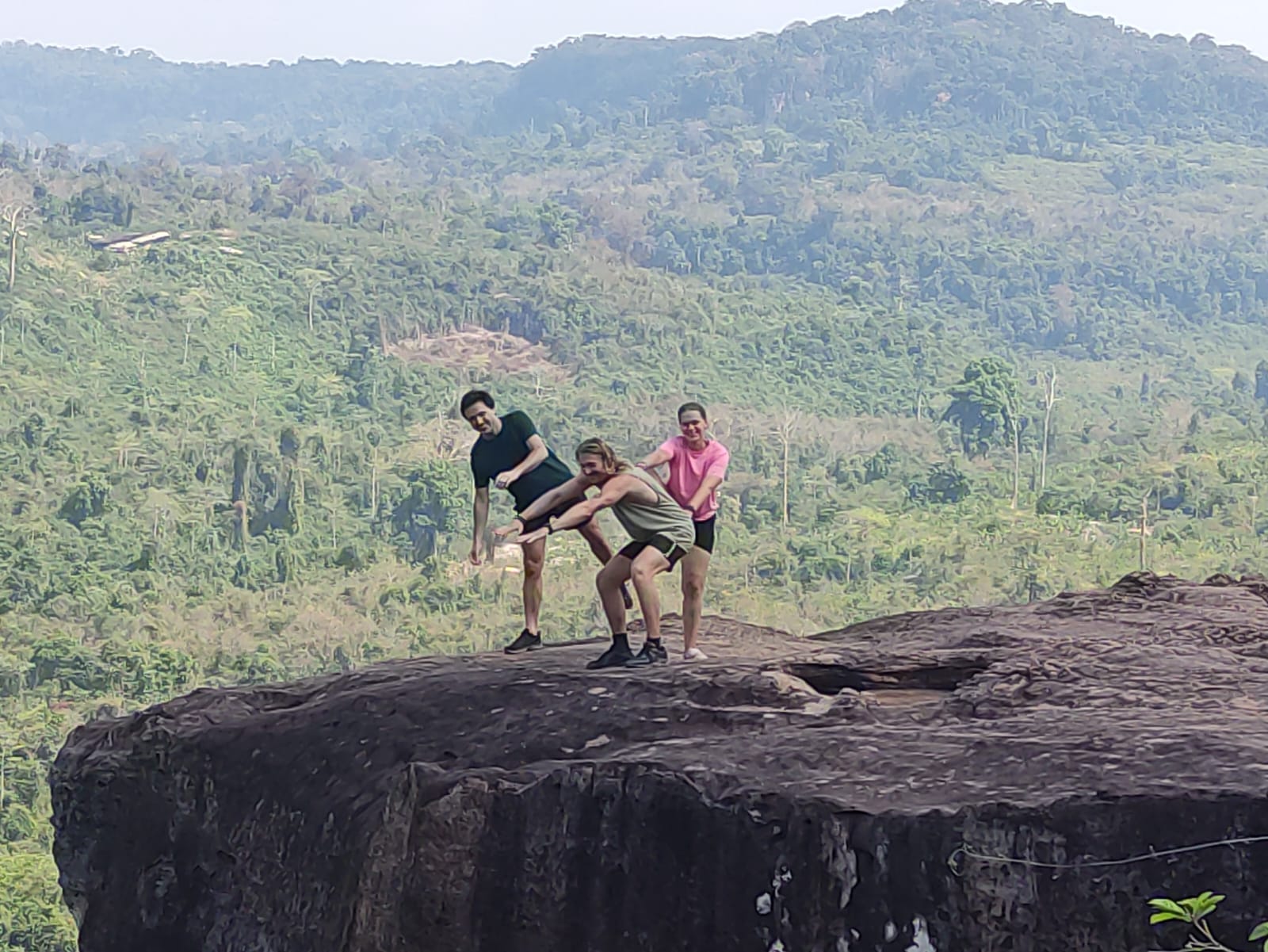

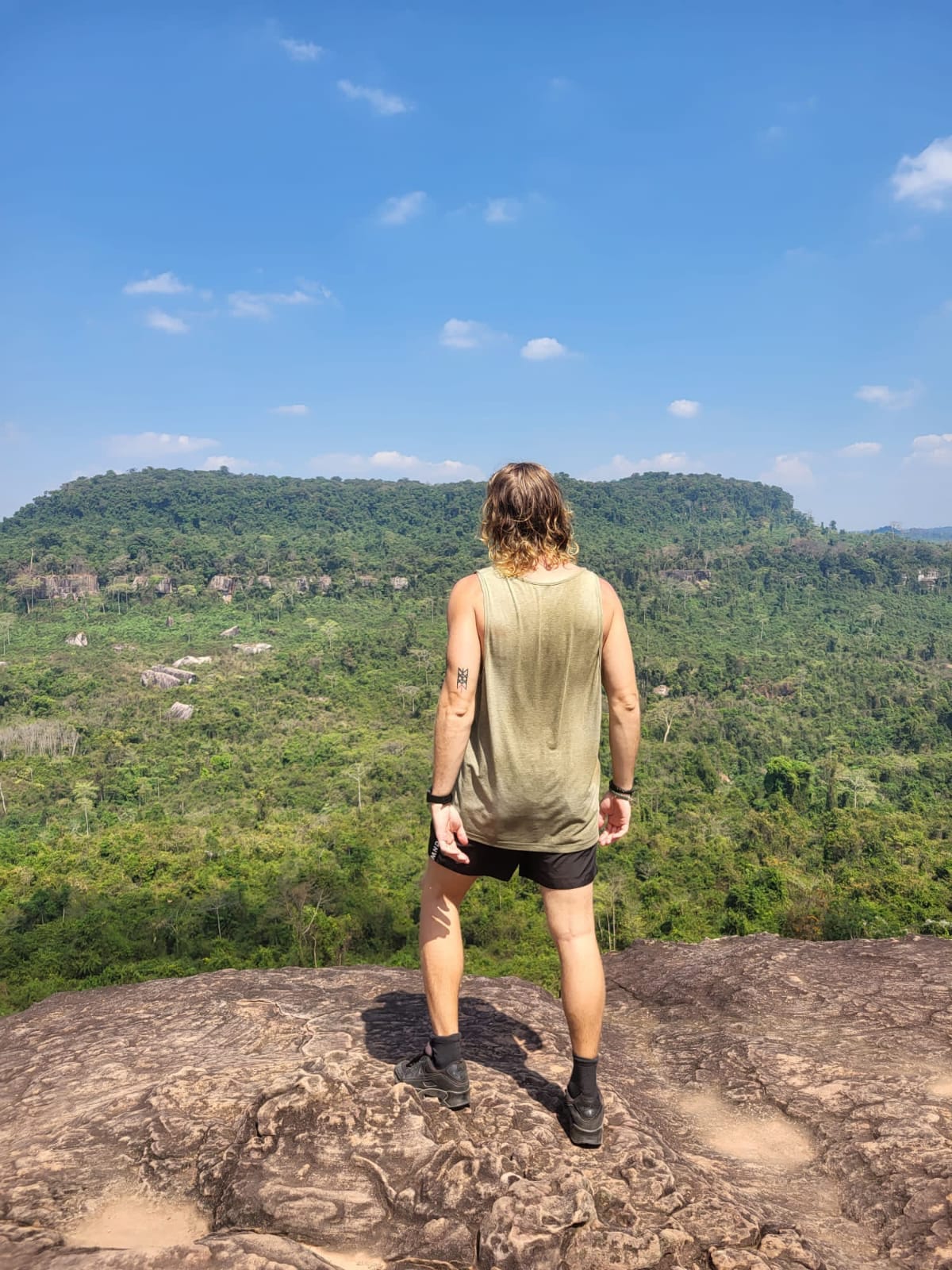

We drove back to Siem Reap and ended the day with a Duvel.
Tired but satisfied.